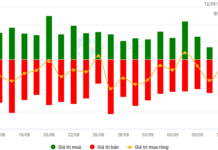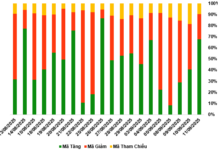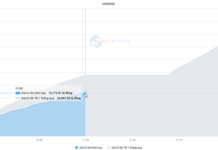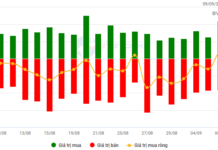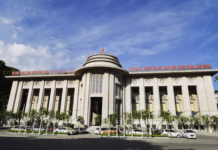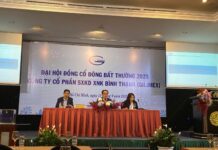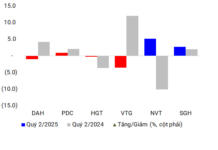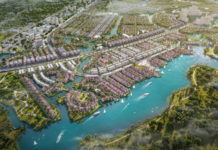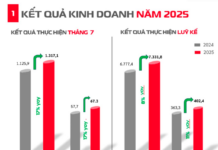To achieve the “Miracle of the Red River,” Hanoi must implement the approved master plan for the Red River and Duong River. Hanoi needs to develop along both sides of the river.
This was one of the statements made by the Chairman of the National Assembly, Vuong Dinh Hue, during the 12th session of the 16th People’s Council of Hanoi. He hopes that by 2030, Hanoi will become the center and driving force for the development of the Red River Delta, the key economic region of the North, and the whole country. At the same time, it will have deep international integration and high competitiveness with the region and the world. The “Miracle of the Red River” could be a metaphor like the world once said “Miracle on the Han River” to refer to South Korea’s miraculous economic growth.
THE RIVER AND THE ROOTS OF THE CITY
In order to build and develop the capital city of Hanoi by 2030 and envisioning to 2045, on May 5, 2022, the Politburo issued Resolution No. 15-NQ/TW. The resolution has clearly determined that the development of the capital city of Hanoi, “Civilized – Modern – Developed,” is an important political task in the strategy of building and protecting the Fatherland with the spirit of “The whole country for Hanoi, Hanoi for the whole country.”
This is the responsibility and duty of the whole Party, the entire people, and the entire army, of the entire political system, and also the top priority task of the Party Committee, the government, and the people of Hanoi.
It is notable that the general planning for the construction of the capital city by 2030 and the vision towards 2050 is oriented towards the Red River and Duong River as green axes, central landscapes, and the development of a harmonious urban area on both sides of the river. Many experts in the fields of architecture, economics, and history agree that Hanoi should develop along the Red River.
All opinions unanimously regard the river as a priceless gift from nature for Hanoi. There are a few cities in the world that have this priceless gift. These cities have become famous for their beautiful architecture in the world, such as Venice in Italy, an attractive tourist city, or the beautiful city of Bruges in Belgium, and Paris in France.
Following the gentle flow of these rivers, they are associated with the roots of history, culture, and unique features of architecture, painting, and poetry. Along these rivers are often vibrant urban areas, where economic forms are transformed and create greater material and spiritual values than anywhere else.
Discussing this issue, Dr. Le Xuan Nghia, an economist and member of the Advisory Council of the National Finance-Monetary Policy, agrees that rivers create a city. Our ancestors used to say, “proximity to the city comes from proximity to the river banks.” Without rivers and water sources, there can be no city. The river is the most important place for water supply and drainage, a prerequisite for an urban area.
Brilliant civilizations around the world have been formed and developed in the basins of major rivers such as the Egyptian civilization on the Nile River, the Indian civilization on the Ganges River, the Chinese civilization on the Yellow River… by taking advantage of the fresh water source for trading and cultivation. It is thanks to these rivers of commerce that prosperous urban areas and thriving towns have been formed along the riverbanks.
Professor of History Le Van Lan, from a historical perspective, believes that “rivers make up the length of history, culture, and urban development.” Following the flow of the Red River, wherever you look, it leaves behind unique cultural values, especially the formation of the fertile land of Hanoi. It can be seen that the riverside urban area, along the flow of time, absorbs the souls and cultures. It is the place that deeply connects people and the land, creating a rich heritage and a continuous representation in the consciousness of each person.
THE RED RIVER, A DISTINGUISHED FEATURE OF HANOI
As we enter 2024, Hanoi, together with Bac Ninh and Hung Yen provinces, is urgently implementing the project to invest in and build the Belt Road 4 – the Capital Region. In particular, Hanoi is making efforts to soon build three bridges over the Red River and Duong River on Belt Road 4: Me So Bridge, Hong Ha Bridge over the Red River, and Hoai Thuong Bridge over the Duong River, in order to coincide with the exploitation of Belt Road 4 by the end of 2025.
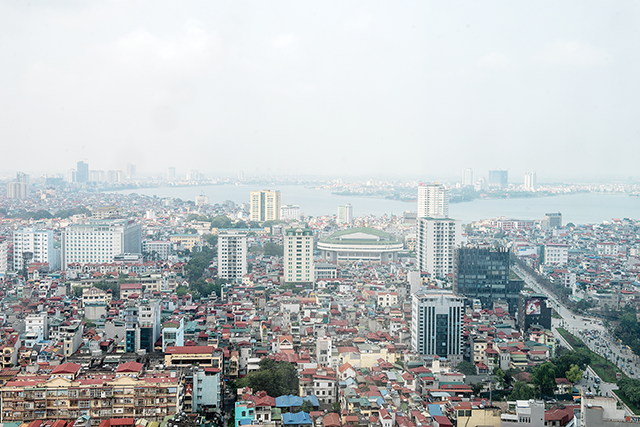
The construction of the belt roads, all towards the vision of building and developing the capital city of Hanoi along the flow of the Red River. At the end of 2023, Hanoi organized a seminar on “The Plan to Build a Cultural Landscape Park in the Middle of the Red River: Vision and Solutions.” All of these efforts are dedicated to preparing for the early implementation of the master plan for the Red River and Duong River that Chairman of the National Assembly Vuong Dinh Hue once desired.
When he was still the Secretary of the Hanoi Municipal Party Committee, he also said: Looking down from an aircraft or observing from a train, if we see the banks of the Red River as they are now, how can the capital city develop? Hanoi is developing the Capital City Master Plan for the 2021-2030 period, with a vision towards 2050, as well as adjusting the General Planning for the construction of the Capital City until 2045, with a vision towards 2065. The viewpoint for organizing space in large-scale planning, Hanoi is implementing, identifies the Red River as one of the 5 important axes, with the orientation of developing green space, the central landscape of the city, and the development of a harmonious urban area on both sides of the river.
Architect Tran Ngoc Chinh, Chairman of the Vietnam Urban Planning and Development Association, believes that this orientation will serve as a foundation for making the Red River a natural framework, a distinct highlight of the future Hanoi. It will establish green, ecological, and cultural public spaces.
Based on practical requirements and world experience, Tân Chiến, the Chairman of the Ba Dinh District People’s Committee, contributed some interesting opinions. He said that there needs to be a connection between the middle bank and the riverbank with the urban area. The unique architectural heritage of Hanoi, such as Long Bien Bridge, Dong Xuan Market, should also be connected to create higher value. By building the River Park, including the newly invested area that covers the entire middle bank and the revitalization area, including residential areas concentrated outside the dike, belonging to Phúc Tân, Chương Dương (Hoan Kiem District), Phúc Xá (Ba Dinh District), Tữ Liên, Quảng An, Nhật Tan (Tay Ho District), and Ngoc Thụy (Long Bien District). Along with that are valuable architectural elements that need to be connected, such as Long Bien Bridge, Dong Xuan Market, and the Hàng Đậu Water Tower, which are all part of the old town, old streets.
Architect Tran Ngoc Chinh mentioned that the research and transformation of the middle bank and the sediment of the Red River into a cultural and tourist park in the capital city is a breakthrough solution. This will serve as a foundation to make the Red River flow through the heart of Hanoi, becoming a green space axis that is attractive not only within the scope of the two riverbanks but also has a spreading effect and provides economic impetus for both the capital region and the city of Hanoi…
The full content of the article is published in the Vietnam Economic Magazine, issue 7+8-2024, released on February 12-25, 2024. For more information, please read here.
https://postenp.phaha.vn/chi-tiet-toa-soan/tap-chi-kinh-te-viet-nam


